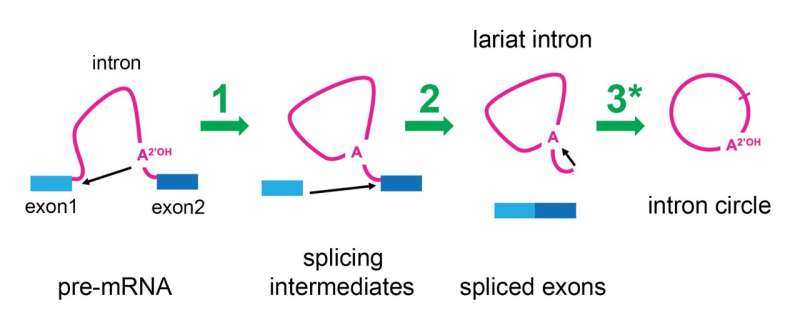Study discovers cellular activity that hints recycling is in our DNA
Originally published by by Rose Miyatsu, University of California - Santa Cruz, on May 11, 2024
Shown is the splicing pathway. The pre-messenger RNA (pre-mRNA) has exons (blue) and introns (pink). The spliceosome (not shown) was known to catalyze two chemical reactions (black arrows) in a two-step process (green arrows labeled 1 and 2) that splice the exons together and removes the intron as a lariat. This study demonstrates that after splicing is finished, the spliceosome is still active and can convert the lariat intron into a circle using a third reaction (green arrow 3) marked by an asterix. Credit: Manuel Ares, UC Santa Cruz
Although you may not appreciate them, or have even heard of them, throughout your body, countless microscopic machines called spliceosomes are hard at work. As you sit and read, they are faithfully and rapidly putting back together the broken information in your genes by removing sequences called "introns" so that your messenger RNAs can make the correct proteins needed by your cells.
Introns are perhaps one of our genome's biggest mysteries. They are DNA sequences that interrupt the sensible protein-coding information in your genes, and need to be "spliced out." The human genome has hundreds of thousands of introns, about 7 or 8 per gene, and each is removed by a specialized RNA protein complex called the "spliceosome" that cuts out all the introns and splices together the remaining coding sequences, called exons. How this system of broken genes and the spliceosome evolved in our genomes is not known.


Comments
Post a Comment